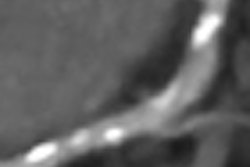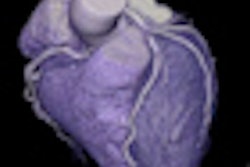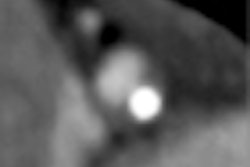CHICAGO - Performing coronary CT angiography (CCTA) early in the evaluation of chest pain in the emergency department may quickly and accurately predict which patients should be admitted for acute coronary syndrome (ACS), according to study results presented at this week's American College of Cardiology (ACC) meeting.
"In emergency department patients with chest pain suggestive of ACS, an evaluation strategy incorporating CCTA early on significantly reduces length of stay and time to diagnosis and increases direct ... discharge rates without any apparent increase in missed ACS," said principal investigator Dr. Udo Hoffmann, director of cardiac imaging at Massachusetts General Hospital.
Additionally, there was no increase in costs of care despite more diagnostic testing in the CCTA arm of the study compared to current standard emergency department (ED) evaluation, he said. Chest pain suggestive of ACS is one of the most common presentations in the ED, and current approaches to rule out ACS are inefficient, Hoffmann said.
Rule Out Myocardial Infarction/Ischemia Using Computer Assisted Tomography (ROMICAT) II was designed following the completion of ROMICAT I, a blinded observational study of CCTA in acute chest pain patients in the emergency department who were at low or intermediate risk for ACS. Results showed that only about 8% of these patients actually have ACS.
In ROMICAT II, 1,000 patients with chest pain and suspected acute coronary syndrome were randomized in a 1-1 ratio to either a CCTA screening approach or standard ED evaluation per the treating physician's discretion.
The primary end point of ROMICAT II was length of hospital stay, which was an average of 23.2 hours for the CCTA approach versus 30.8 hours for the standard approach (p = 0.0002). Hoffmann credited a reduced time to diagnosis for much of the advantage associated with CCTA: an average of 10.4 hours in the CCTA group versus 18.7 hours in the control group (p = 0.001).
Among patients whose final diagnosis was not ACS, the average length of stay was 17.2 hours for the CCTA group and 27.2 hours for the control group (p < 0.001). The average hospital stay for patients with ACS was about 3.5 days in both groups.
A total of 46.7% of CCTA patients were directly discharged from the ED, compared with only 12.4% of patients in the standard evaluation arm (p = 0.001). The safety of the two approaches was comparable, with no missed ACS cases in either group. National statistics show that approximately 2% of chest pain patients evaluated with non-CCTA standard approaches in the ED are discharged from the hospital with ACS, Hoffmann noted.
There were two (0.4%) periprocedural complications in the CCTA arm, compared with none in the standard evaluation arm, a nonsignificant difference. The rate of major adverse events within 30 days was also statistically similar in the two groups (0.4% for CCTA and 1.0% for controls, p = 0.37).
No increase in costs
While Medicare data suggest CCTA has the potential to significantly increase costs, this was not the case in ROMICAT II, Hoffmann said. In fact, the average cost of the emergency department stay was less in the CCTA arm: $2,053, compared with $2,532 in the standard arm, he said. The average cost per hospital stay was $1,950 for CCTA, compared with $1,297 for standard evaluation.
However, the CCTA approach was associated with greater radiation exposure: an average of 14.3 mSv, compared with 5.3 mSv in the control arm (p < 0.0001). The figures include exposures from SPECT, echocardiography, electrical impedance tomography, and invasive coronary angiography during hospitalization and 28 days of follow-up.
The higher radiation dose figures in the CCTA group are due to an increase in overall imaging tests, Hoffmann said. A total of 23.2% of CCTA patients had two or more tests during hospitalization, compared with 10.6% in the control arm.
"More testing is done because cardiac CT is very sensitive in the detection of [coronary artery disease]. So there was more testing in patients who had disease," he said.
More sophisticated imaging techniques, such as higher-slice CT scans, may lower radiation exposures in these patients, Hoffmann said.
Commenting on the results, Dr. Matthew Budoff of the Los Angeles Biomedical Research Institute noted that ROMICAT II was the third randomized trial to compare the safety and effectiveness of CCTA and standard of care.
"ACRIN-PA [presented earlier in the meeting] and CT-STAT have had consistent results," with all three showing the CCTA approach to be fast, safe, and cost-effective, he said.
ROMICAT II was funded by the National Heart, Lung, and Blood Institute.



















